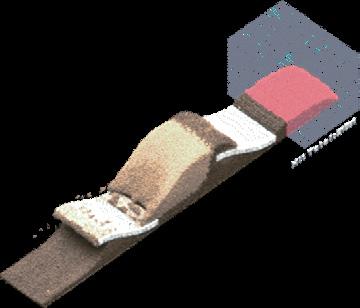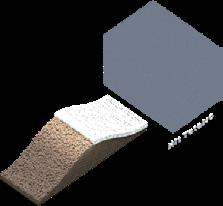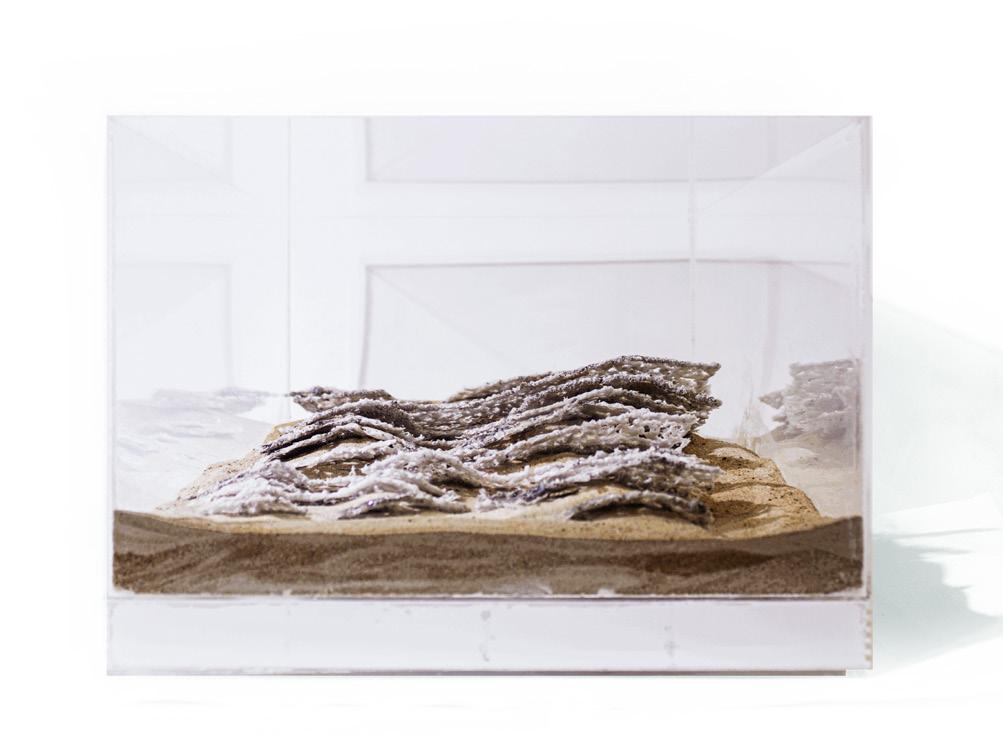
2 minute read
SAND AS A STRUCTURE
from AEOLIAN - AADRL
by Salim Hilles
For the bigger models the glass is partially covered with sand. It was executed following the logic of actual process in the desert. The first layer of glass was done on a specific slope, then the portion of sand was blown on top of the model from a specific angle and the next layer of glass was fused. The repetition of the process resulted in a form, structurally integrated with the sand.

Advertisement
Soft Boundaries
REDIRECTION INTUITION
A simple set of digital experiments was devised to extract principles and develop an intuition for how different geometries can affect the collision of sand particles with a wind force moving straight towards it. Three entities are required for this experiment: sand particles, barrier geometry, and the area to prevent sand particles from penetrating. From the series of experiments conducted, it became clear that geometry located with an angle to the wind direction was performing better.
Soft Boundaries
BARRIER INTUITION
As the triangular geometry proved to be better performing, the experiments were expanded upon to test how different configurations of the triangular geometry could influence the global system. In addition, the ratio between volume of geometry and the number of particles penetrating the barrier also gives a better understanding to furthermore optimize the process.
After multiple examples and iterations, it became clear that certain geometries and strategies provided better results. For example, the single triangular edges from experiment [ I ] would get overwhelmed quickly from the rush of sand particles, whereas having multiple layers such as those displayed in experiment [ II ] of them proved to create better results. Experiment [ III ] attempted to show how the having certain densities of the multiple triangular edges would respond. The final and segmented study proved to be the best out of all attempted experimentations; utilizing a maximum performance with minimal resources. Going forward, the team use lessons learned in this chapter in the agent based system.
Experiment [ I ] Single Triangular Edge
Beginning
Experiment [ II ] Multiple Triangular Edge
Regular Edges
Large Edge Small Edge
Beginning Middle End
Experiment [ III ] Multiple Triangular Edge
Regular Edge
Large Edges Small Edges
Beginning Middle End
Face Selection
SUITABLE STRUCTURE SIDE ON DUNES
Strategies were developed to find the most optimal way to fuse terrain in dune landscapes. By analysing the direction of wind, specific faces were identified: wind-facing faces, leeward faces, and a blend between the two, creating a side-face. These faces were tested in a real-time simulative environment to determine which was most effective at redirecting sand particles.
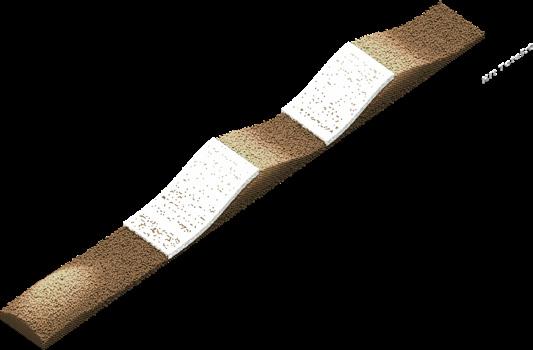
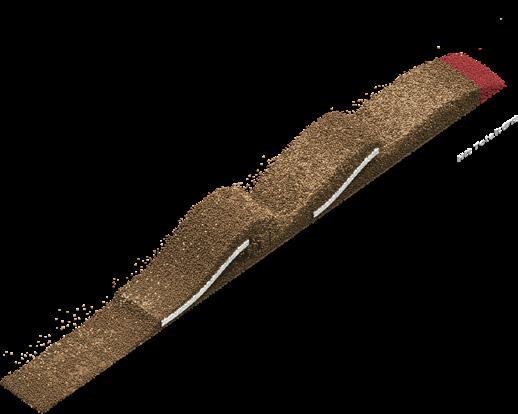
Face Selection Join Face
Face Selection Back Face
After running the simulations, the back face structure has the best performance in protecting the area from the sand. As a result, the rear face is chosen to be a significant side for agents to consider for structural creation.



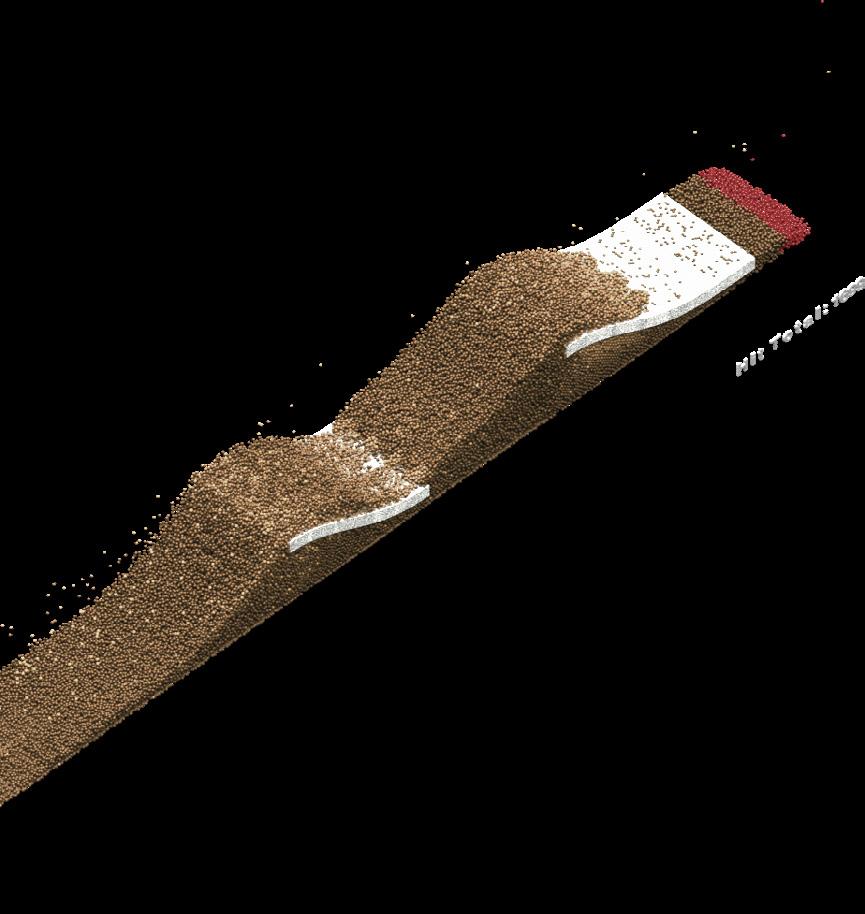
Quantity Number Of Layering
